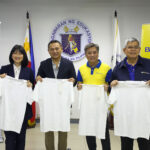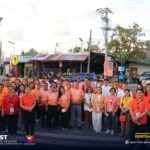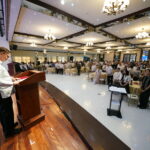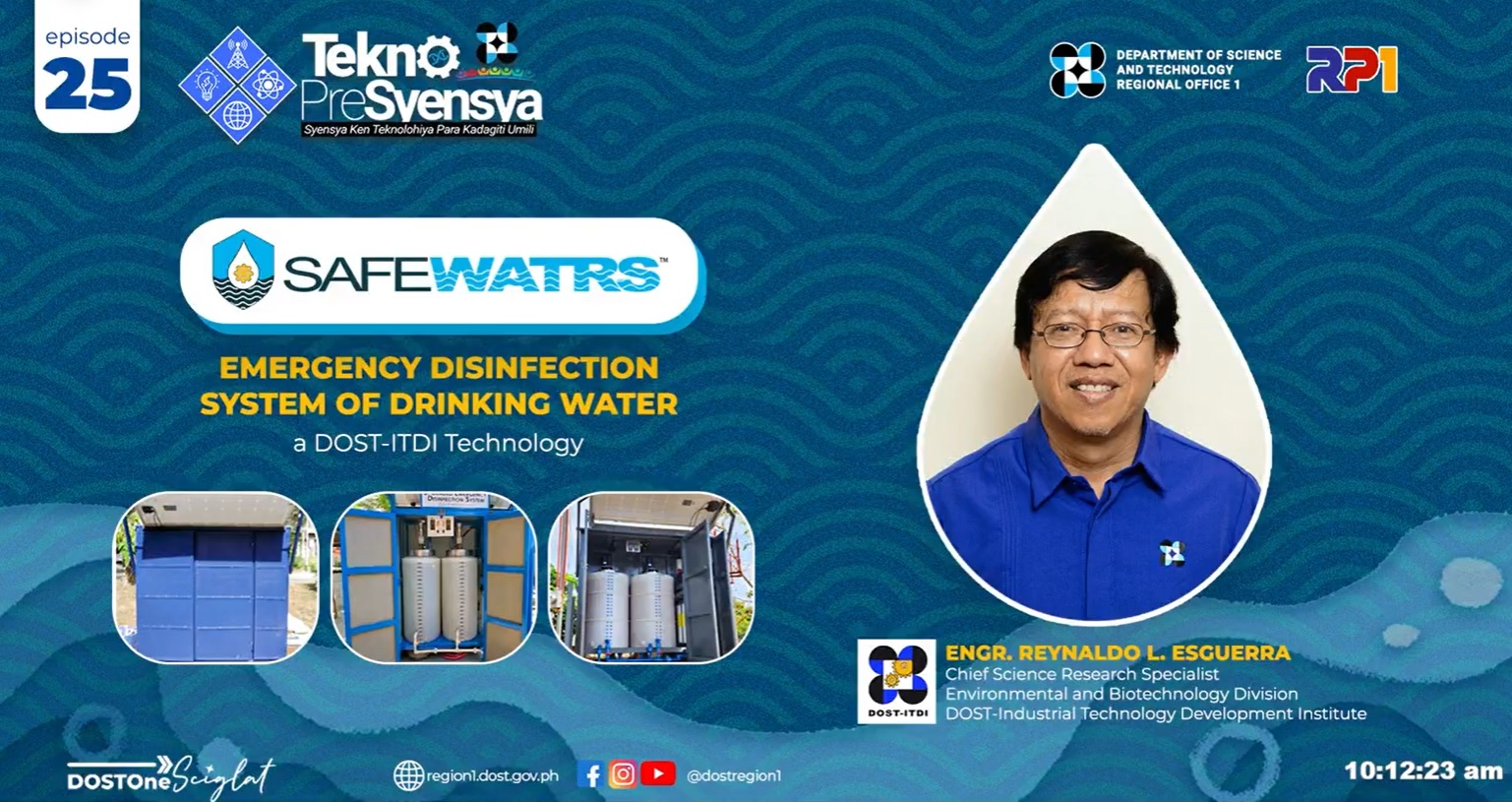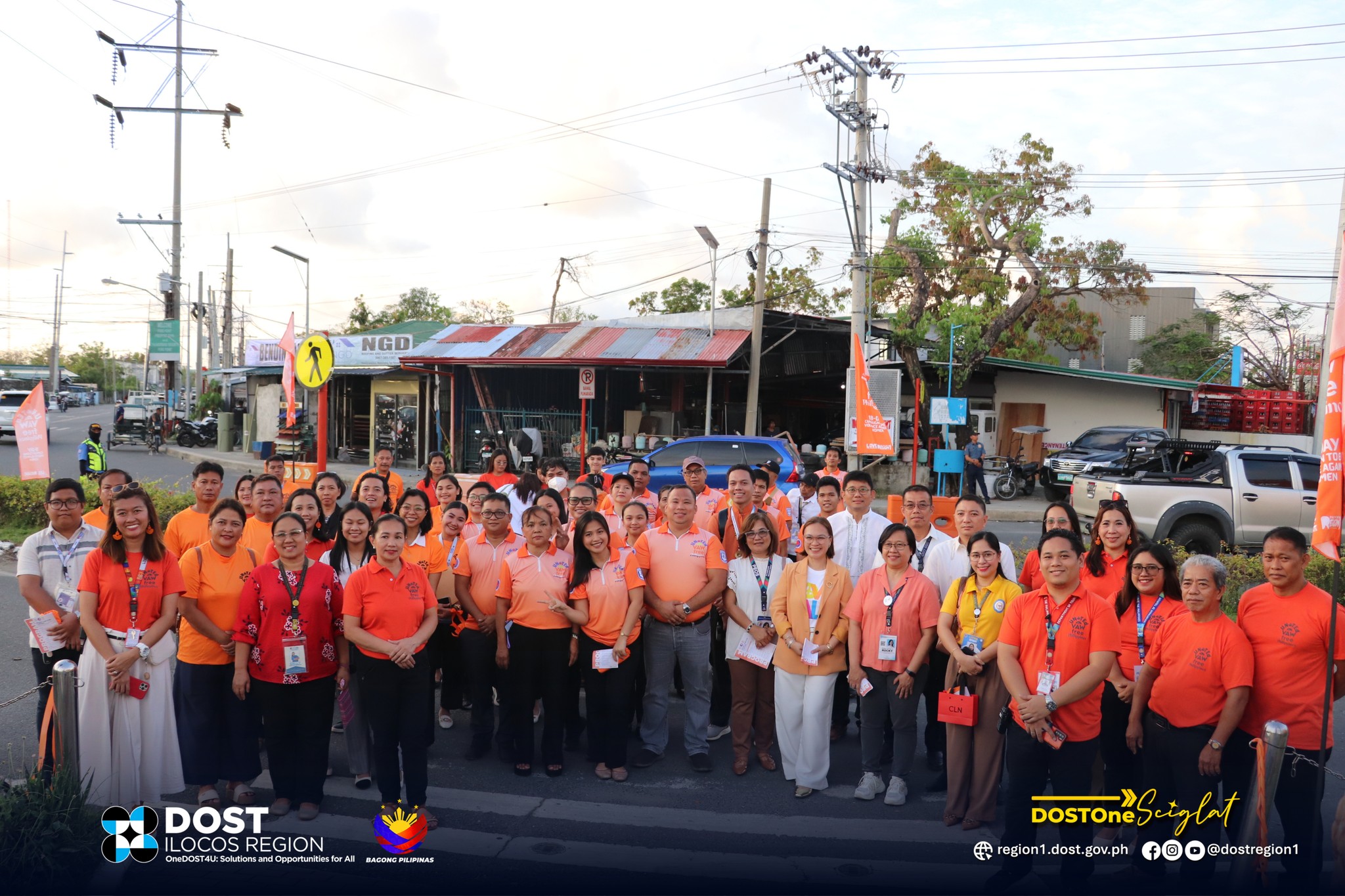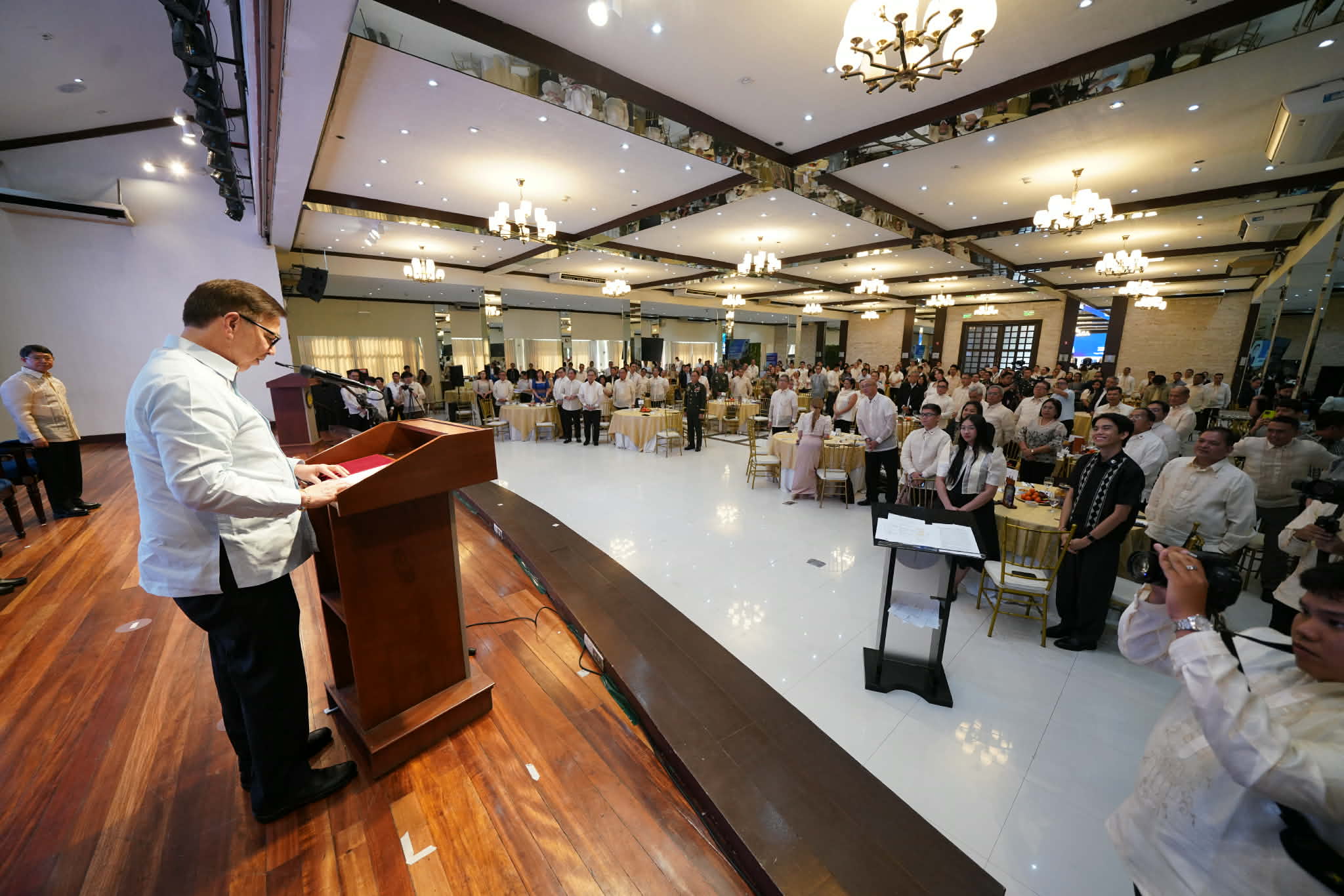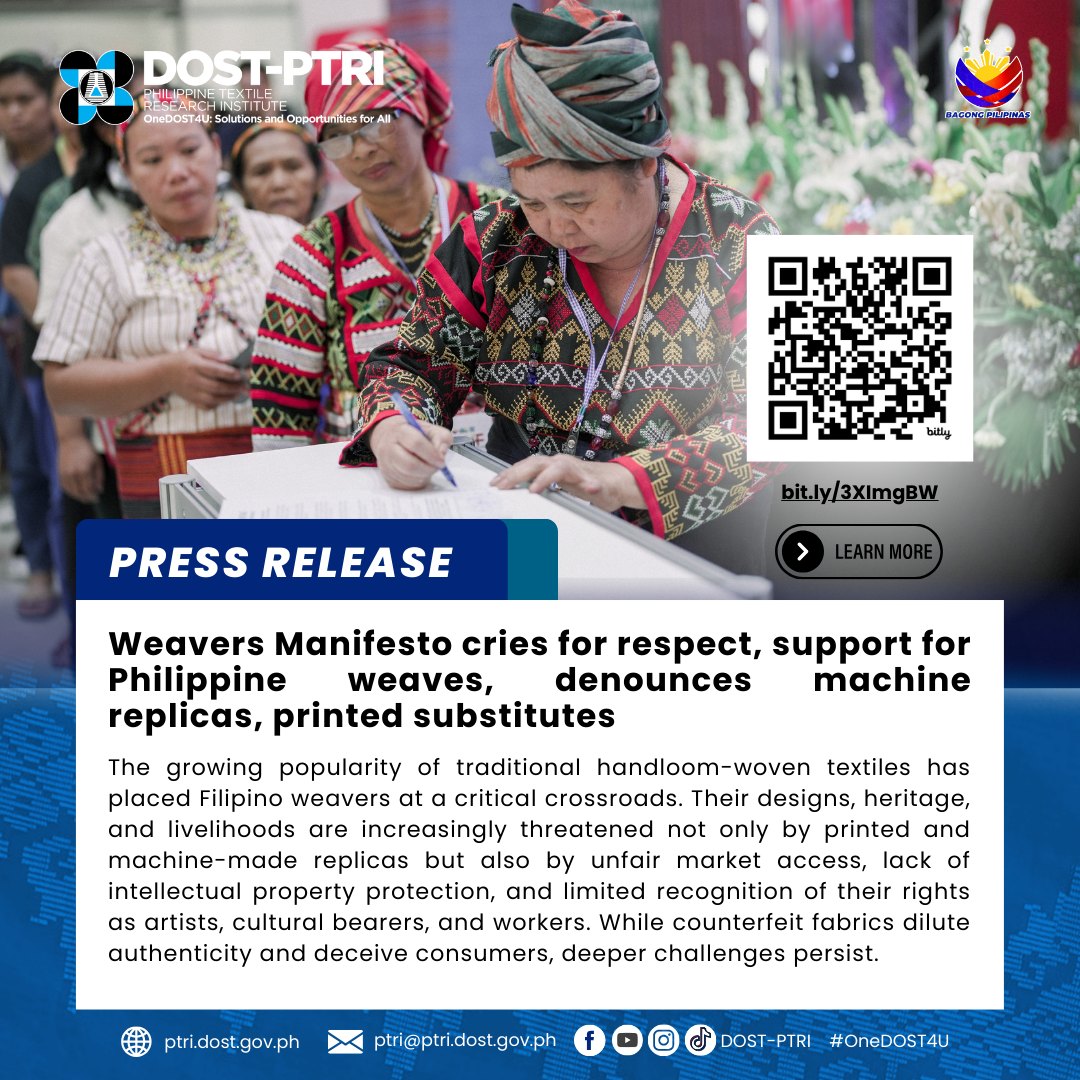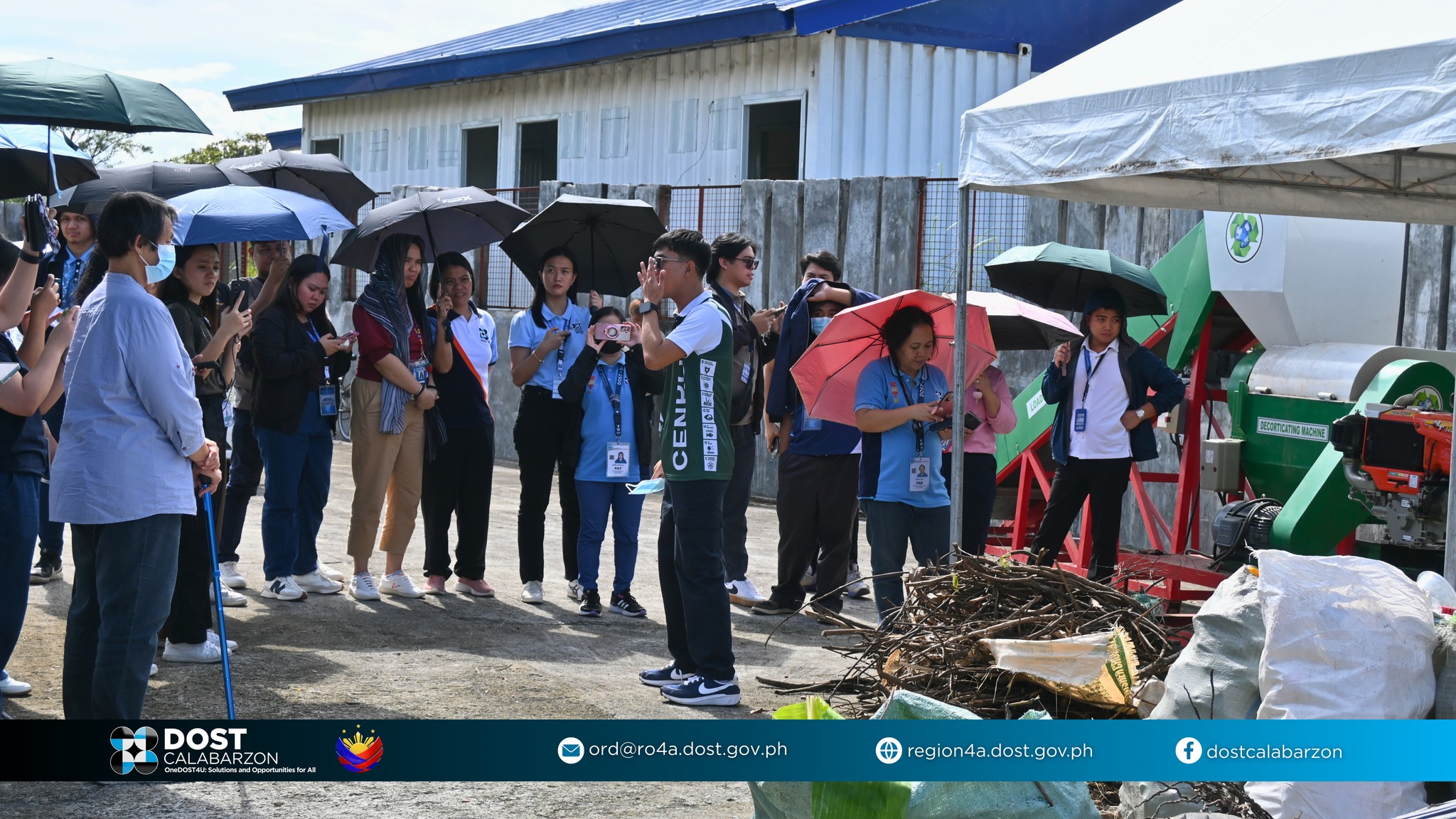On August 31, 2023, the “SAFEWTRS: Emergency Disinfection System of Drinking Water a DOST-ITDI Technology” was featured in the 25th episode of the weekly radio program of the Department of Science and Technology Region 1 (DOST-1) and DZAG Radyo Pilipinas Agoo to promote knowledge and advancements in the field.
The resource person, Engr. Reynaldo L. Esguerra, Chief Science Research Specialist at the DOST-Industrial Technology Development Institute (DOST-ITDI), Environmental and Biotechnology Division, introduced the Emergency Disinfection System of Drinking Water with his knowledge and commitment.
As a result of typhoons, flooding, earthquakes, breakouts, etc., there has been a dearth of sources of drinking water, and this ground-breaking technology has begun to offer a solution. In response, DOST-ITDI announced the SAFEWATRS Upgraded Emergency Disinfection System (UPEDS), a portable, manually controlled, solar-powered emergency drinking water system with a capacity of up to 2000 liters of safe drinking water for 9 hours.
The decision to change the name of UPEDS to SAFEWATRS was made in August 2023 after it became clear that access to safe drinking water is a problem that affects many people on a regular basis rather than just in times of emergency. In addition to addressing the drinking water scarcity, this technology complies with the strict requirements outlined in the Philippine National Standards for Drinking Water.
Engr. Esguerra also presented the features of SAFEWATRS which is an energy independent using its solar panels, batch type or semi-continuous compact and mobile water treatment system, has a capacity of 2000 liters per day, and is effective in the removal of chemicals and metals in water, making the post=processed water to be safe for consumption of the public.
Also mentioned is that the SAFEWATRS have no major differences from the other filtration and disinfection systems besides the disinfecting of saltwater as this technology can operate on rainwaters, spring waters, and turbid waters. One good thing about SAFEWATRS is that it was developed not for the agency to earn from it, rather it was developed mainly to help the communities.
To prove its effectiveness, this was already deployed to Bagong Silangan, Quezon City; Agoncillo, Batangas; Sto. Domingo, Ilocos Sur; San Clemente, Tarlac. Adding to that the said technology had its performance testing using the Laguna Lake water which resulted in an excellent rating following the Philippine National Standards for Drinking Water.
Region 1 is currently on the list of recipients of this technology through the efforts of DOST 1, which consistently offers its customers and stakeholders high-quality service and assistance through the various programs and projects of DOST and with the assistance of various partner agencies like the DOST-ITDI, which provides revolutionary technologies.( Christian Dominic I. Casimiro



